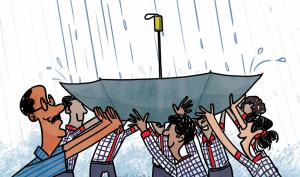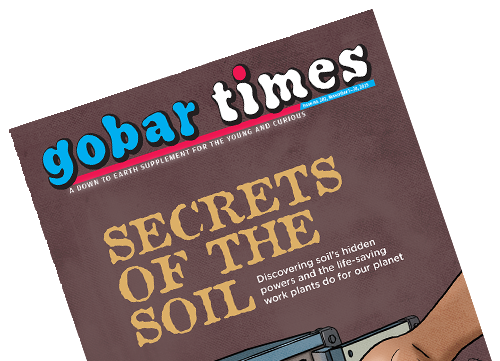
Through rainwater harvesting, green pledges, and online campaigns, one educator proves how simple steps can create lasting ripples of change.

We observe World Water Day every year on March 22, to highlight the importance of water. But how much attention do we give to the amount of water we use everyday? According to a 2008 World Bank report, an average Indian household performs approximately 340 wash cycles in a year and this accounts for approximately 40.7 kilowatt hour of electricity, 47.5 kilolitre of water and 27 kilogram (kg) of detergent per household per year. We have to wash our clothes and use water and energy in our day-to-day lives, but here’s a way we can save the environment as well as a lot of money on laundry!

A few kids were tracking their paper boat in a river. Who was to say they would discover dirty truths.

The Mission and the Mangoes is a work of fiction that sets its premise around a dystopic, water-starved Earth where unrestrained mining, drilling and the exhaustion of earth’s resources is rendering the planet unlivable. The young author of the book, 12-year-old Hena Parveen, tries to marry a futuristic setting where technological advancements such as humanoid robots and regular space exploration are a reality, with the Earth’s ecosystem that is hurtling towards an inevitable collapse. Interestingly, all this does not take place in a far-fetched future...

In summers this year, some European rivers had dried substantially, causing drought in many parts of the region. It revealed to their surface, some ancient stones with intricate engravings on them. Their markings used to indicate the water-level of these rivers, which served as a common forecasting tool for famines. Such stones were called hunger stones. One such is disclosed at the banks of the Elbe River. Dated to 1616 AD, its rock is etched with a warning in German...

A Freedom Pledge on water—a promise to conserve every drop for our present, before we even reach the future. ************************************************************************************* My friends call me ‘Water Maniac’. They say I suffer from a ‘reverse’ hydrophobia— perennially worried about water. Basically, dreading the prospect when we won’t have any of it…

Chintu and Chinki were excited to go out for their summer vacations. They were bored of staying at home all through the lockdown. Since their grandparents lived nearby, they had planned to visit their village Tikli. Chintu and Chinki had done all their packing and rode off with their Mom and Dad to the village. As they came close to Tikli, they saw some women carrying pots of water on their heads, walking on the roadside...

While there is no escape from washing hands regularly, we can definitely be more mindful of the way we use water and avoid its wastage. According to the World Health Organization (WHO) guidelines on hygiene practices, the simple act of hand washing using a soap and water, is one of the most effective tools to protect us from getting infected by the coronavirus. Practices such as washing hands before and after eating or using the toilet, maintaining one-arm distance when around others and...

